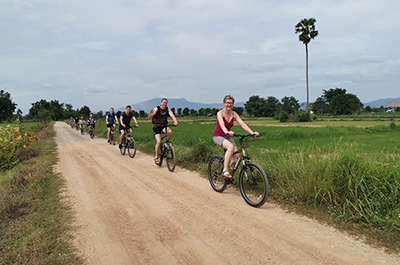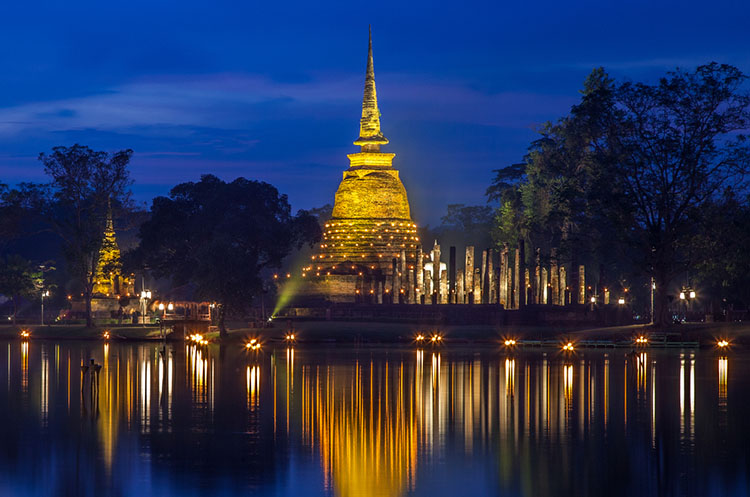
Sukhothai Historical Park
Ruins of temples & palaces of the first independent Thai Kingdom
The Sukhothai Historical Park contains the ruins of old Sukhothai, the capital of the Sukhothai Kingdom that was founded in 1238.
Dozens of well preserved and restored monuments dating back to the 13th until 15th centuries are found in a well maintained park like setting with lakes, ponds and trees. The park is much less visited than better known historical sites as Ayutthaya and Angkor.
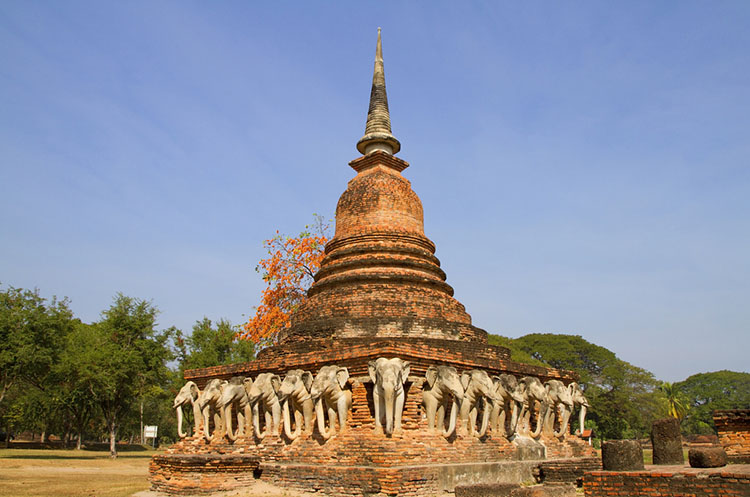
Wat Sorasak
The first independent Thai Kingdom
Sukhothai was the first independent Thai Kingdom, where Thai art and architecture developed into what is known as the Sukhothai style, influenced mainly by Khmer and Singhalese styles. Characteristic for the Sukhothai style are the lotus bud chedi and statues of a walking Buddha, the clothing draped around the body.
Much information about the history of the empire and its Kings is known from several inscribed stone steles like the famous Ramkhamhaeng stele, discovered during excavations in Sukhothai and its vassal towns. The stele is on display at the National Museum in Bangkok.
The old city
The old city is surrounded by a moat and city walls enclosing an area of about 2 kilometers long and 1.6 kilometers wide. Entry gates in the center of each side of the surrounding wall provided access to the city. The 3 km2 area contained the Royal Palace and a number of the most important temples. Spread out across several areas outside the walled area are the ruins of dozens more temples in various states of preservation.
UNESCO World Heritage Site
The historic town of Sukhothai and associated historic towns of Si Satchanalai and Kamphaeng Phet were declared a UNESCO World Heritage Site in 1991.
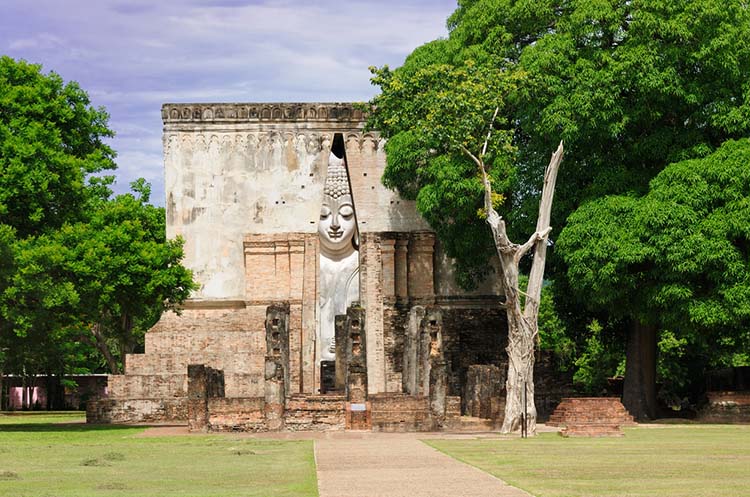
Wat Si Chum
Royal Palace & temples of the Sukhothai Historical Park
During the over two centuries of its existence dozens of impressive temples and a Royal Palace were constructed by the rulers of the Sukhothai empire. The Palace was located next to the Wat Mahathat in the walled central zone. Nothing of it remains, as it was likely built of perishable materials as wood.
Ramkhamhaeng National Museum
The Ramkhamhaeng National Museum provides an opportunity to learn about the history of the Sukhothai empire. The museum comprises of two buildings and an outdoor section.
On display are artifacts discovered during excavations and restoration works in Sukhothai and one of its vassal cities, Kamphaeng Phet. Items exhibited include ancient weapons, ceramics, images of the Buddha, sculptures and a replica of the Ramkhamhaeng stele. The outdoor part displays a replica of a kiln used to produce ceramics.
The museum is located in the central zone, near the East gate in the city wall. It opens daily from 8.30 am until 4.30 pm. Admission is 150 Thai Baht per person. Making photographs inside the museum is not allowed.
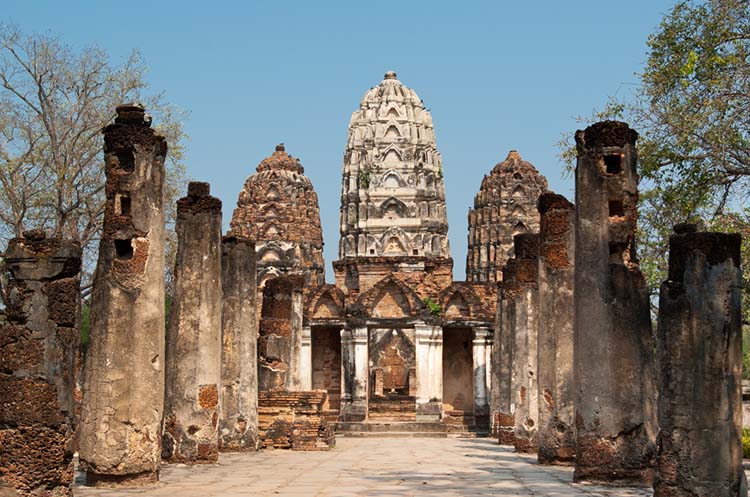
Wat Si Sawai
How to get to Sukhothai Historical Park
Sukhothai Historical Park is located in Sukhothai province about 430 kilometers North of Bangkok. Check the “How to get to Sukhothai” section on options of how to reach modern Sukhothai town.
The park is found in Muang Kao district, a little over 10 kilometers West of modern Sukhothai town. The most comfortable way to get there is by private car with driver. Book one through hotel or travel agent. The ride by songthaew, a converted pick up truck with benches in the back, costs around 40 Baht one way. The songthaew will usually wait until there are enough passengers, the ride takes about 25 minutes. A return trip by tuk tuk including a few hours of waiting time will cost around 700 Thai Baht, a one way trip around 200 Baht.
Getting around in the Park
The central zone contains a number of the most important monuments and the Ramkhamhaeng National Museum. Distances are small, and the area can easily be covered on foot. A small electric train runs around the park from the entrance at a fee of 50 Thai Baht per person. A fun way to get around independently is on a bicycle that can be rented at 50 Baht per day. To get to the zones further away, charter a tuk tuk or car with driver. A tuk tuk will cost around 500 Thai Baht for half a day.
Admission & opening hours
The park opens daily from 8.30 am until 6 pm. The historical park comprises of five zones that each charge an entrance fee of 100 Baht and 10 Baht extra per bicycle. Free maps of the park are available at the ticket office.
Sukhothai temples
- Wat Mahathat
- Wat Si Sawai
- Wat Sa Si
- Wat Sorasak
- Wat Tra Phang Ngoen
- Wat Si Chum
- Wat Chetuphon
- Wat Phra Phai Luang
- Wat Saphan Hin
Sukhothai Historical Park Zones
Sukhothai temples & history
Also visit nearby
- Private or group tour
- Full day tour from Sukhothai
- Explore historical park & countryside by bike
From Chiang Mai
- Private or group tour
- One day or multiple days tour from Chiang Mai
- Explore historical park & countryside by bike
